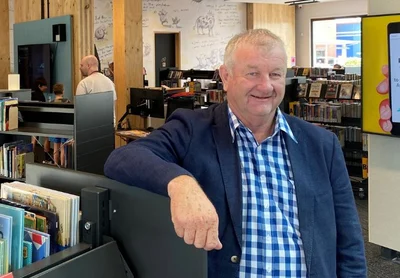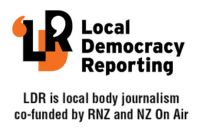Rates rises jump nationwide, but Ashburton at lower end

Looking around the country, the Ashburton District's proposed 9.9% rate rise next year is on the lower end of the spectrum.
Local Government New Zealand (LGNZ) collated the planned rate rises of 48 of the country's 78 councils to determine Kiwi homeowners are facing an average rate rise of 15% over the coming year - and there is no sign of relief in sight.
Ashburton Mayor Neil Brown said the 2024/25 budget focused on core infrastructure.
“We are spending a lot more money on roads and water but what we are getting caught up on is the three I’s – inflation, interest and insurance.
“We are spending more and more on roading, but we are not getting any better level of service for it because of the inflation.
“People will see the same when they go to the supermarket and are paying a lot more to get the same.”
The draft long-term goes before the council for adoption on Wednesday, opening consultation with the community and starting the conversation with if the plan is right, should there be cuts, or do they want more, Brown said.
While Ashburton is proposing a 9.9% increase, Buller District Council is looking at a whopping 31.8% rise.
Hamilton is proposing a 19.9% rise, Dunedin City Council 17.5% and Whangārei 17.2%.
In Canterbury, Environment Canterbury is consulting on a hefty 24.2% average rate rise.
LGNZ commissioned a report from Infometrics principal economist Brad Olsen to show why rates were rising so much.
The report showed that between 2002-2022, the average rate rise was only 5.7% per year, but averaged 9.8% in 2023.
It found over the past three years, roads and water supply systems are 27% more expensive to build.
The increases are larger than inflation has been in recent years, Olsen said.
There was a difference of up to 20% between what projects were expected to cost when planned and what they cost now.
"To put that in perspective, if a council had five $20 million projects [in its] last long-term plan, they would now have to cut one of those entirely to pay for the cost escalation on the other four."
LGNZ vice-president and Lower Hutt mayor Campbell Barry said councils were having to grapple with what projects to prioritise.
“Councils are acutely aware they need to balance the need for investment with affordable increases but the pressure has reached tipping point.”
It is time to get serious about ways to pay for local infrastructure that does not involve going deeper into ratepayers' pockets, Barry said.
He said a share of GST on housing growth, which had been put forward by the government, would also help - but by itself it was not enough.
By Jonathan Leask

